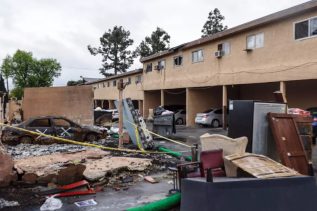In California, residential property sellers are legally required to disclose all material facts about the property—facts that could impact a buyer’s decision to proceed with the purchase. While some may see this as a bureaucratic burden, full disclosure is not only legally mandated—it’s smart business.
Proper disclosures protect both parties: buyers gain a clearer understanding of the property and its surroundings, and sellers reduce the risk of post-sale disputes or legal claims, particularly the familiar refrain: “Had I known that, I never would’ve bought the house.”
What Must Be Disclosed?
The disclosure requirements in California are intentionally broad, designed to protect buyers in a post-Caveat Emptor (Let the Buyer Beware) era. The seller’s obligation is straightforward: disclose what you know.
Here’s what that includes:
- Material Defects
Any physical or functional issue that could significantly affect the property’s value, desirability, or intended use. - Known Issues (Past or Present)
Sellers must disclose any problems they are aware of, including those that have been repaired. A repaired defect is still a known defect. - Hazardous Materials
The presence (or past presence) of substances such as asbestos, lead-based paint, mold, or contaminated soil must be disclosed. - Natural Hazards
If the property lies within a designated earthquake fault zone, flood zone, fire hazard area, or other state-identified risk zones, this must be disclosed using a Natural Hazard Disclosure form. - Neighborhood and Environmental Factors
Persistent odors, excessive noise, nuisance neighbors, or other external factors that may influence a buyer’s decision must also be revealed. - Transfer Disclosure Statement (TDS)
This legally required form outlines the seller’s knowledge of the property’s condition, including systems, structural elements, and neighborhood conditions. It must be delivered to the buyer as soon as practicable once an offer is accepted. - Seller Property Questionnaire (SPQ)
Though not legally required, the SPQ is widely used in California and offers a more detailed look into the seller’s knowledge of the property and surrounding issues. In practice, most agents recommend completing both forms for maximum protection and transparency.
What Doesn’t Need to Be Disclosed?
Not every minor flaw needs to be itemized. There are limitations and common-sense boundaries to what must be reported:
- Ordinary Wear and Tear
Cosmetic issues such as minor scratches, scuffs, or aging surfaces typically do not rise to the level of material defects. - Obvious Conditions
If a defect is readily observable during a standard walk-through—say, a cracked window or missing handrail—the law generally doesn’t require a separate disclosure. - No Duty to Investigate
Sellers are not required to hire inspectors or uncover hidden issues. The obligation is limited to disclosing what is known.
The Cost of Withholding Information
Non-disclosure is the leading cause of post-sale legal disputes in real estate. It’s also avoidable.
- Legal Liability
Failure to disclose material facts can lead to lawsuits for damages, rescission of the sale, and legal fees. Buyers may claim fraud, misrepresentation, or breach of contract—all of which can become costly. - Loss of the Sale
Late-stage disclosures—especially those that reveal significant issues—can derail a transaction just before closing. It’s far better to disclose early and allow the buyer to make a fully informed decision. - Professional Risk for Agents
Real estate agents must guide clients through the disclosure process but are prohibited from completing disclosure forms on the client’s behalf. Providing advice is allowed; providing answers is not. Agents who overstep this boundary risk personal liability—and so do their clients.
A Note on Agent Selection
A knowledgeable, experienced real estate agent is invaluable during the disclosure process. The right agent ensures nothing is overlooked, provides guidance when gray areas arise, and helps the seller avoid costly missteps. And while some sellers fixate on commission percentages, the cost of poor representation can far exceed the nominal savings of a discount agent.
Remember: professionalism, not penny-pinching, is what protects you in a high-stakes transaction.
Final Word: When in Doubt, Disclose
Disclosure in California isn’t about oversharing—it’s about risk management. The best rule of thumb? If you’re unsure whether to disclose something, err on the side of transparency. It’s better to have a buyer walk away early than to face a lawsuit later. If in doubt, disclose.
Complete, honest disclosure protects everyone. It builds trust, reduces liability, and ultimately leads to smoother, more successful closings.
To discuss this article or any other real estate topic, please contact us any time.
REEF REALTY
Kevin Dougherty, Broker / Owner
(619) 977-7777












